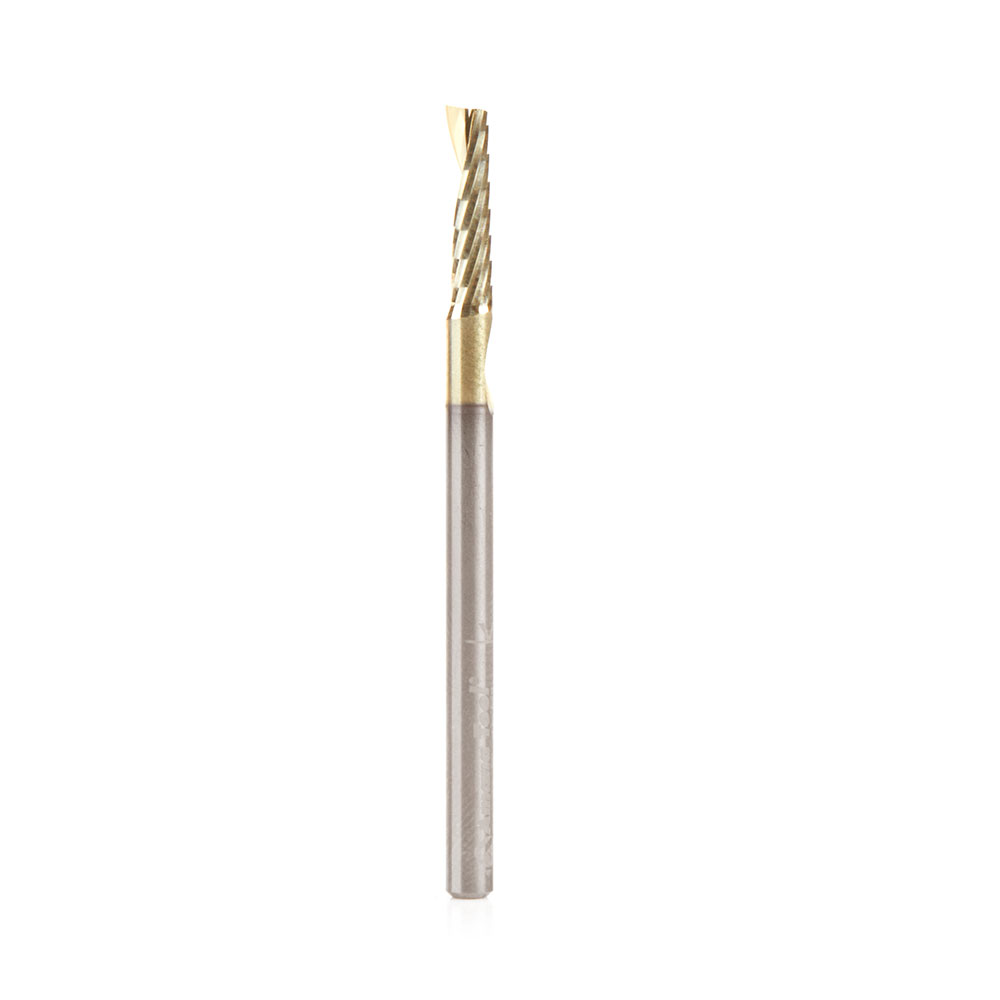Answer
Aug 19, 2025 - 06:35 PM
A couple of ways to accurately measure these style of bits is to make a 1/8" hole with it and then measure the hole.
To accurately measure the diameter of a spiral router bit, especially helical tooling, use a V-block and an indicator. First, zero the indicator against the shank or round part of the bit. Then, rotate the bit within the V-block to measure the cutting edge. The cutting diameter is twice the measured distance minus the shank size.
Detailed Steps:
1. V-Block and Indicator:
Securely mount the router bit in a V-block, and use an indicator to precisely measure the distance from the cutting edge to the center point of the bit.
2. Zeroing the Indicator:
Ensure the indicator is set to zero against the shank (the cylindrical part of the bit that fits into the router's collet) or a smooth, round section of the bit.
3. Rolling the Bit:
Gently rotate the router bit within the V-block. This allows the indicator to trace the cutting edge and register the maximum diameter.
4. Measuring the Diameter:
The indicator reading will represent the distance from the center of the shank to the outermost point of the cutting edge. Double this measurement and subtract the shank diameter to get the true cutting diameter.
Important Considerations:
New Bits:
.
New spiral router bits are often slightly smaller than the shank diameter, sometimes within a tolerance of -.003".
Cutting Diameter:
.
This is the maximum diameter of the router bit as it cuts, not the diameter of the shank.
Shank Diameter:
.
The shank diameter is the diameter of the part of the bit that fits into the router collet.
To accurately measure the diameter of a spiral router bit, especially helical tooling, use a V-block and an indicator. First, zero the indicator against the shank or round part of the bit. Then, rotate the bit within the V-block to measure the cutting edge. The cutting diameter is twice the measured distance minus the shank size.
Detailed Steps:
1. V-Block and Indicator:
Securely mount the router bit in a V-block, and use an indicator to precisely measure the distance from the cutting edge to the center point of the bit.
2. Zeroing the Indicator:
Ensure the indicator is set to zero against the shank (the cylindrical part of the bit that fits into the router's collet) or a smooth, round section of the bit.
3. Rolling the Bit:
Gently rotate the router bit within the V-block. This allows the indicator to trace the cutting edge and register the maximum diameter.
4. Measuring the Diameter:
The indicator reading will represent the distance from the center of the shank to the outermost point of the cutting edge. Double this measurement and subtract the shank diameter to get the true cutting diameter.
Important Considerations:
New Bits:
.
New spiral router bits are often slightly smaller than the shank diameter, sometimes within a tolerance of -.003".
Cutting Diameter:
.
This is the maximum diameter of the router bit as it cuts, not the diameter of the shank.
Shank Diameter:
.
The shank diameter is the diameter of the part of the bit that fits into the router collet.



